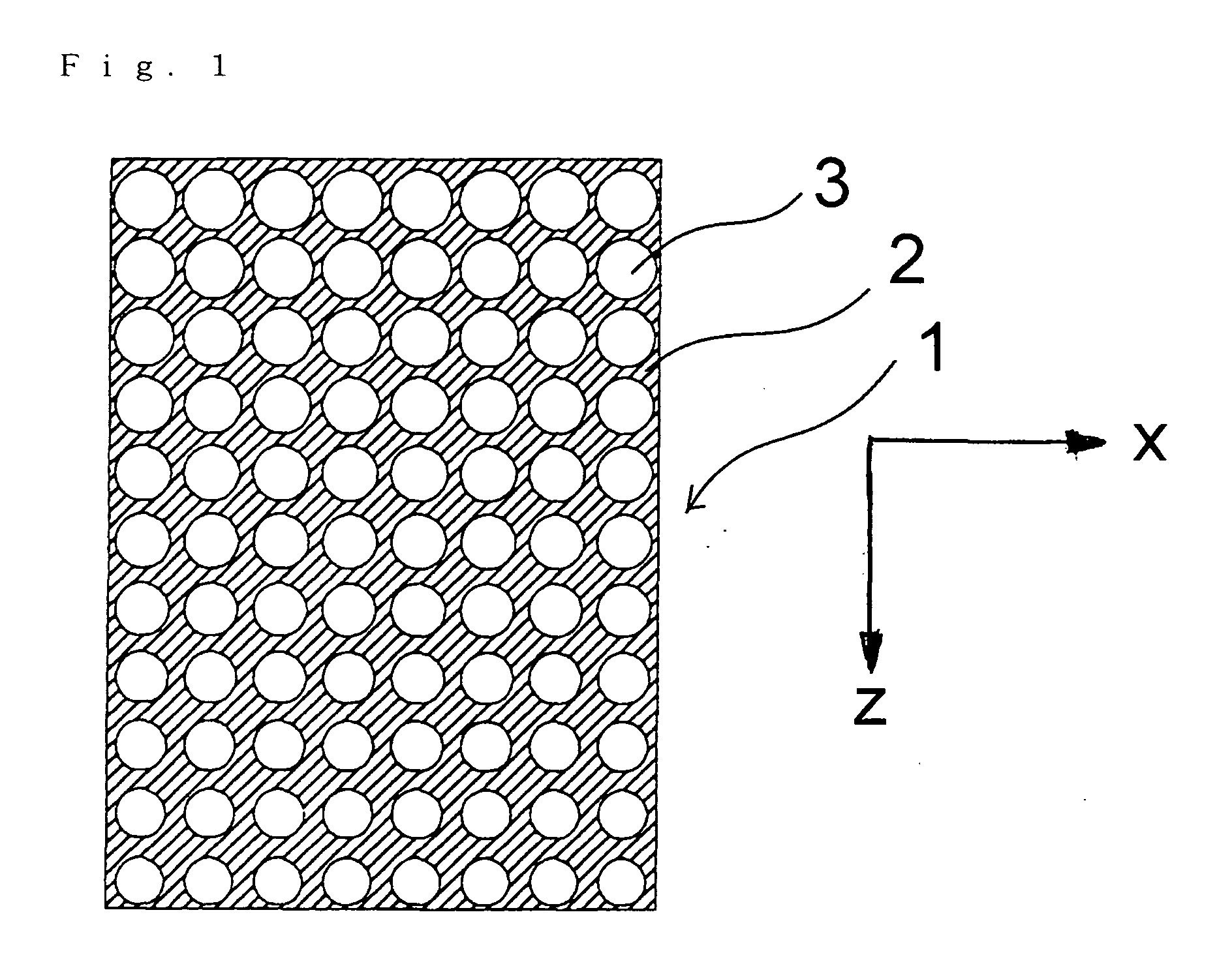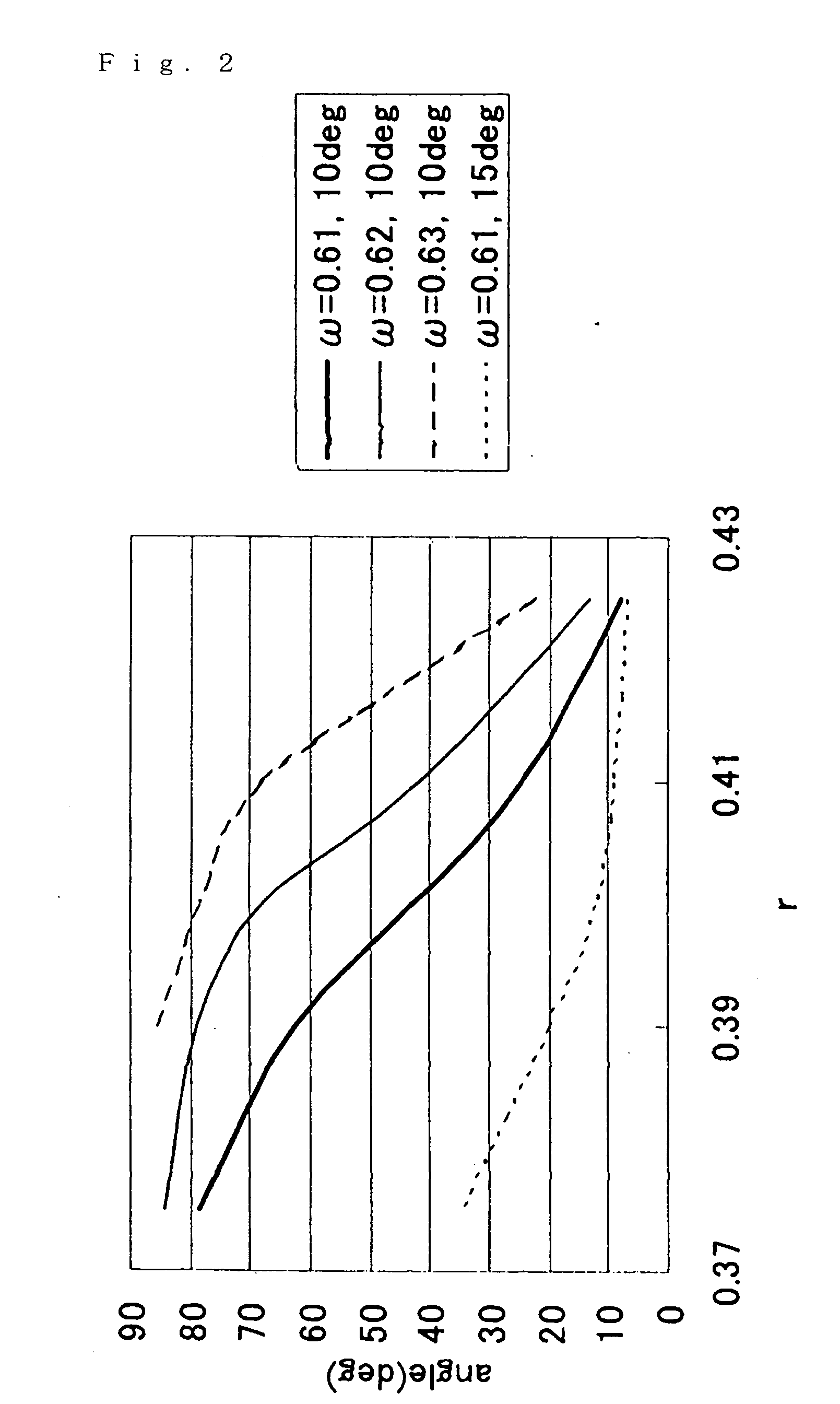Optical element, spectroscope and condenser
- Summary
- Abstract
- Description
- Claims
- Application Information
AI Technical Summary
Benefits of technology
Problems solved by technology
Method used
Image
Examples
Embodiment Construction
[0036] Working configurations of the present invention will be described below with reference to the figures. FIG. 1 is a diagram showing an outline of the structure of a photonic crystal which forms an optical element constituting one example of a working configuration of the present invention. This photonic crystal 1 has a two-dimensional structure, and has a shape in which round air holes 3 are arranged in the configuration of a square lattice in a medium 2 consisting of BN (boron nitride). If the left-right direction in the plane of the page is taken as the x axis, the vertical direction in the plane of the page is taken as the z axis, and the direction perpendicular to the plane of the page is taken as the y axis, then the air holes 3 are formed in the direction of the y axis inside the photonic crystal 1.
[0037] The refractive index, lattice period, and the like of the medium 2 are constant; however, the size of the air holes 3 gradually varies in the direction of the z axis. ...
PUM
 Login to View More
Login to View More Abstract
Description
Claims
Application Information
 Login to View More
Login to View More - R&D
- Intellectual Property
- Life Sciences
- Materials
- Tech Scout
- Unparalleled Data Quality
- Higher Quality Content
- 60% Fewer Hallucinations
Browse by: Latest US Patents, China's latest patents, Technical Efficacy Thesaurus, Application Domain, Technology Topic, Popular Technical Reports.
© 2025 PatSnap. All rights reserved.Legal|Privacy policy|Modern Slavery Act Transparency Statement|Sitemap|About US| Contact US: help@patsnap.com



